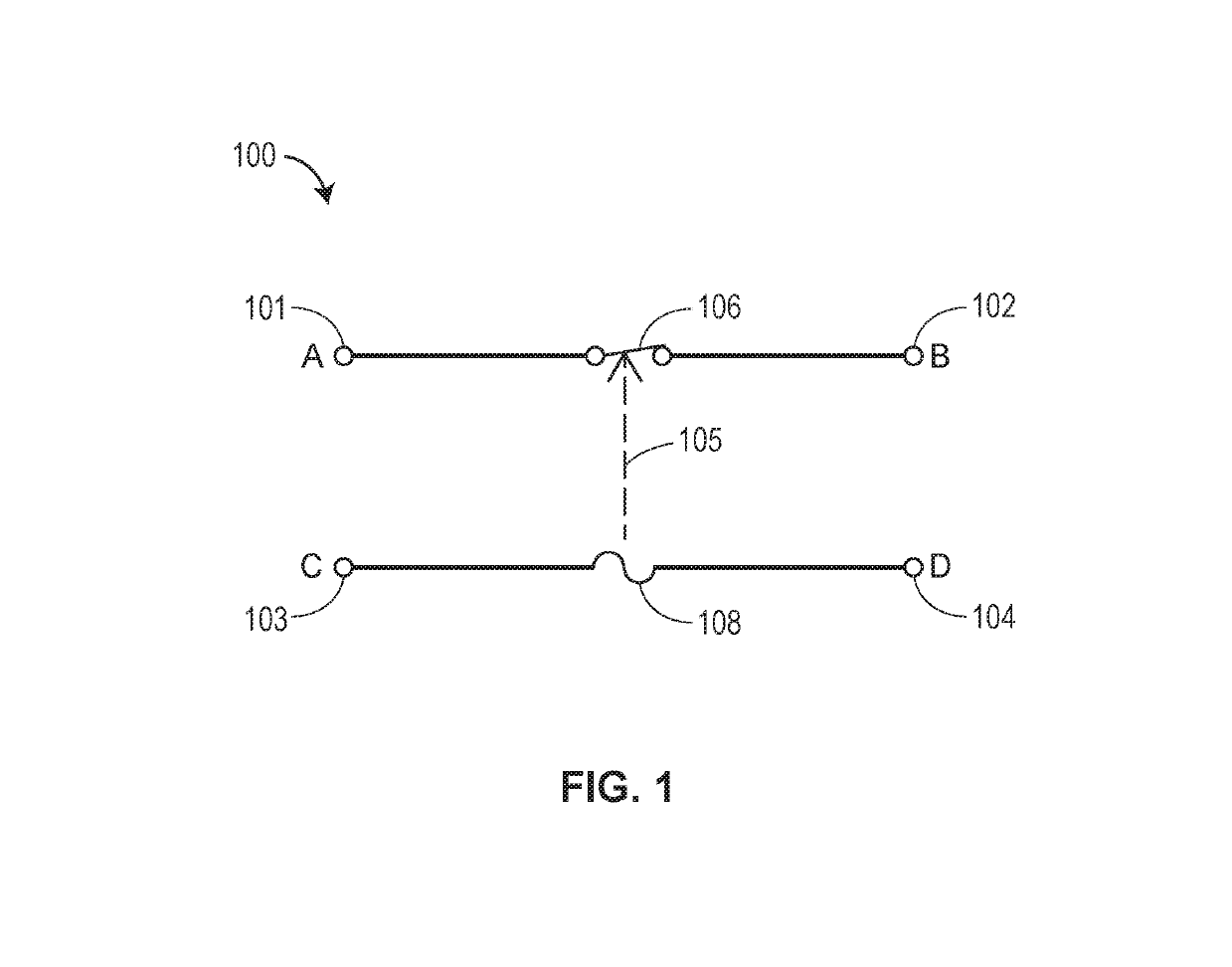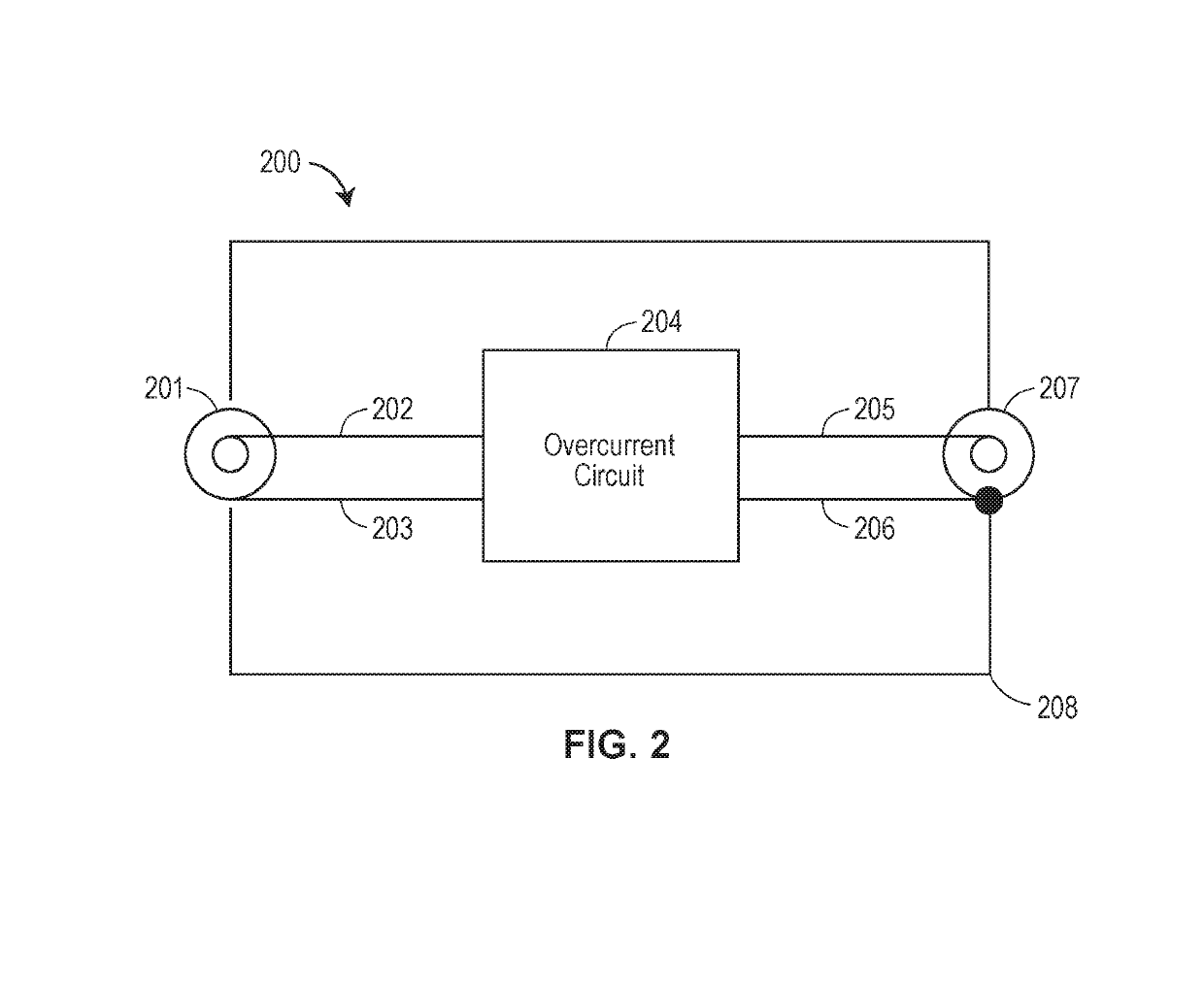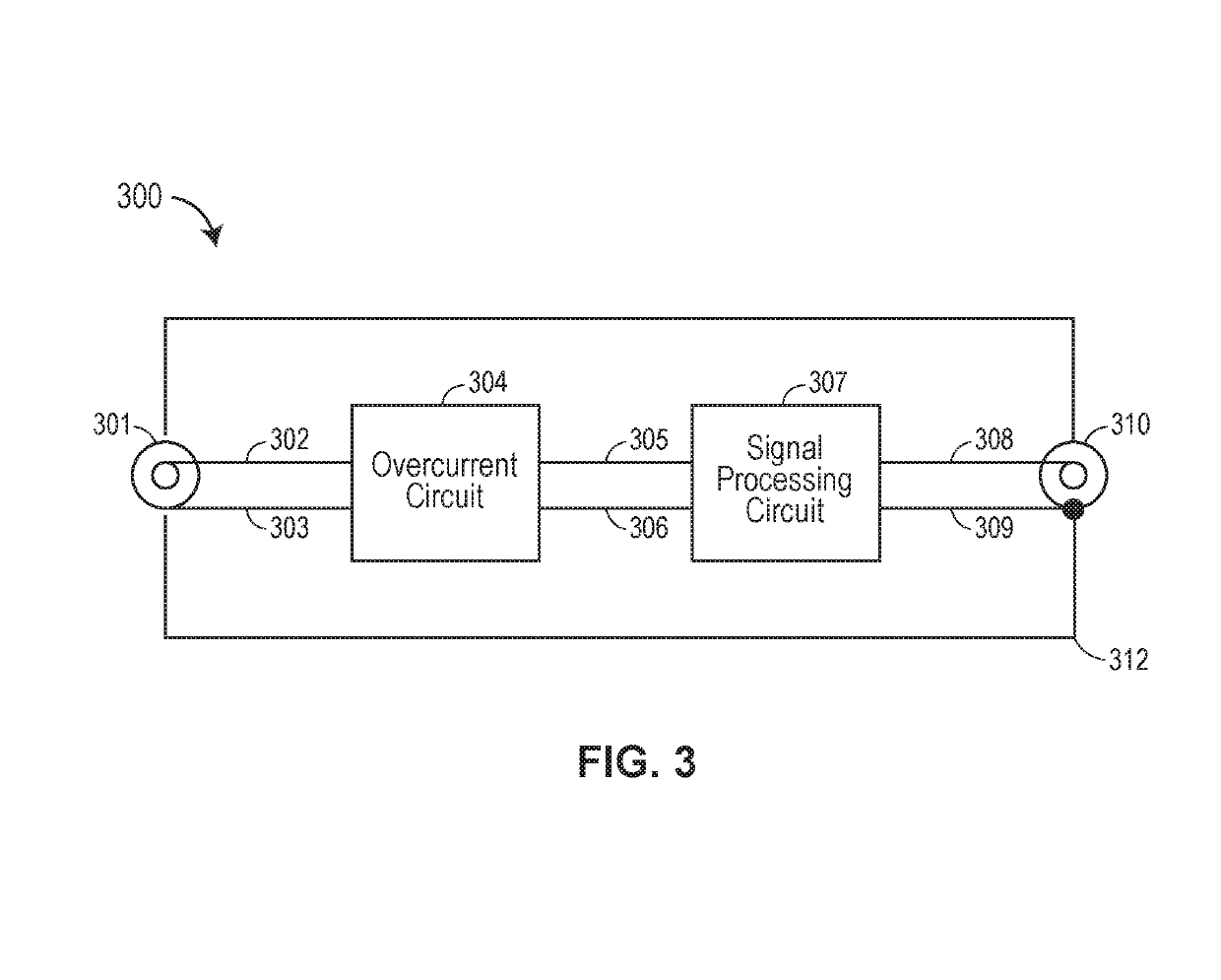Overcurrent protection devices and circuits for shielded cables
a protection device and shielded cable technology, applied in the direction of coupling device connection, coaxial cable/analogue cable, coupling/disengagement parts, etc., to achieve the effect of eliminating fire risk and preventing overcurren
- Summary
- Abstract
- Description
- Claims
- Application Information
AI Technical Summary
Benefits of technology
Problems solved by technology
Method used
Image
Examples
Embodiment Construction
[0026]FIG. 1 illustrates a schematic electrical diagram of an embodiment of an overcurrent circuit 100 in accordance with the present disclosure. In this embodiment, signal conductor element 101 (e.g., a signal input) is connected to signal conductor element 102 (e.g., a signal output) via normally closed signal breaking element 106 (also referred to herein as a “switching element”). In addition, shield conductor element 103 (e.g., a shield input) is connected to shield conductor element 104 (e.g., a shield output) via shield breaking element 108. When current through shield breaking element 108 (also referred to herein as an “overcurrent element”) exceeds an overcurrent threshold or value, it opens, stopping current flow from 103 to 104.
[0027]When the shield breaking element 108 opens, an interlocking element 105 may open the normally closed signal breaking element 106, thereby breaking current flow from 101 to 102, and fully disconnecting the coaxial communication signal. In vario...
PUM
| Property | Measurement | Unit |
|---|---|---|
| voltages | aaaaa | aaaaa |
| currents | aaaaa | aaaaa |
| temperatures | aaaaa | aaaaa |
Abstract
Description
Claims
Application Information
 Login to View More
Login to View More - R&D
- Intellectual Property
- Life Sciences
- Materials
- Tech Scout
- Unparalleled Data Quality
- Higher Quality Content
- 60% Fewer Hallucinations
Browse by: Latest US Patents, China's latest patents, Technical Efficacy Thesaurus, Application Domain, Technology Topic, Popular Technical Reports.
© 2025 PatSnap. All rights reserved.Legal|Privacy policy|Modern Slavery Act Transparency Statement|Sitemap|About US| Contact US: help@patsnap.com



